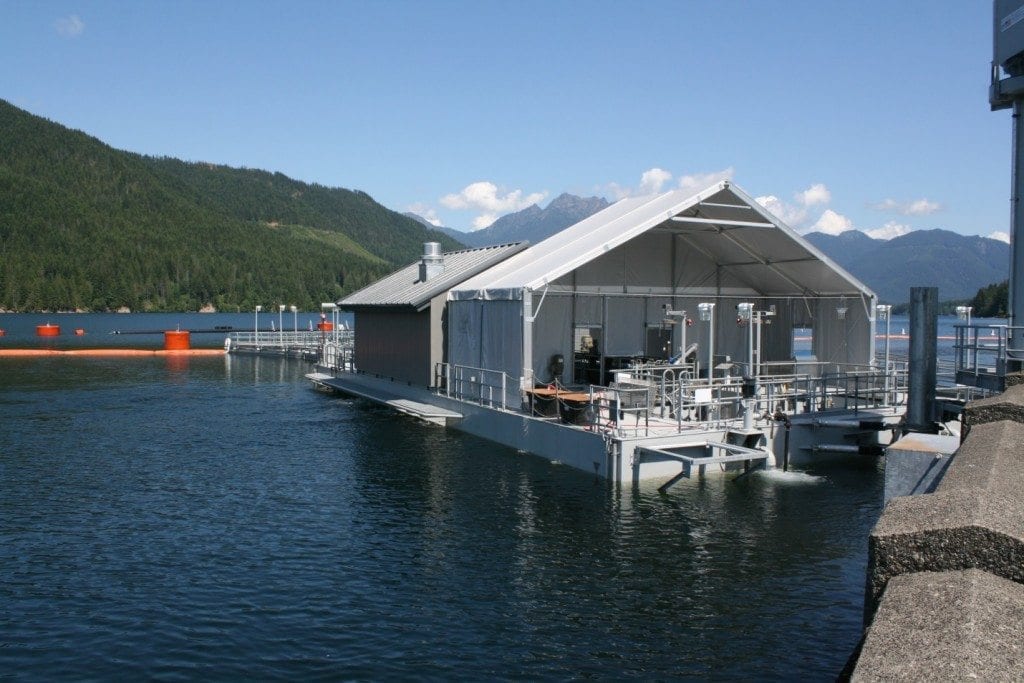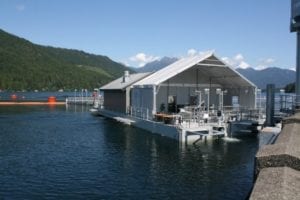Floating Fish Collector
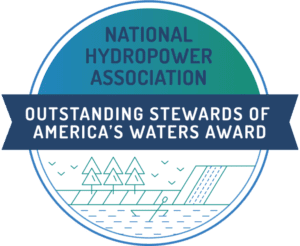
Summary
Utilizing new technology to return salmon populations to the watershed, Tacoma Power developed the Floating Fish Collector at the Cushman Hydroelectric Project. Their innovative system pumps water to screens off fish, while the surface-to-floor nets guide smolts toward the collector. This dynamic project is a leap forward in technology and design, ultimately helping restore fish populations on the North Fork Skokomish River.
Background and Challenge
Tacoma Power’s Cushman Hydroelectric Project provides clean, renewable electricity with two
dams and three powerhouses on the North Fork Skokomish River. The Floating Fish Collector, attached to Cushman Dam No. 1, collects juvenile salmon migrating to the ocean. The 50-foot-wide, 100-foot-long barge pumps water as it screens off fish. It includes surface-to-floor nets that guide smolts toward the collector.
Innovation
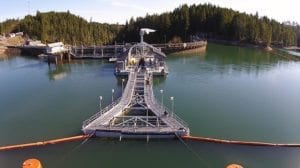
The entire collector, including the nets and Net Transition Structure, has to be able to rise and fall, withstand epic storm conditions, collect fish within the 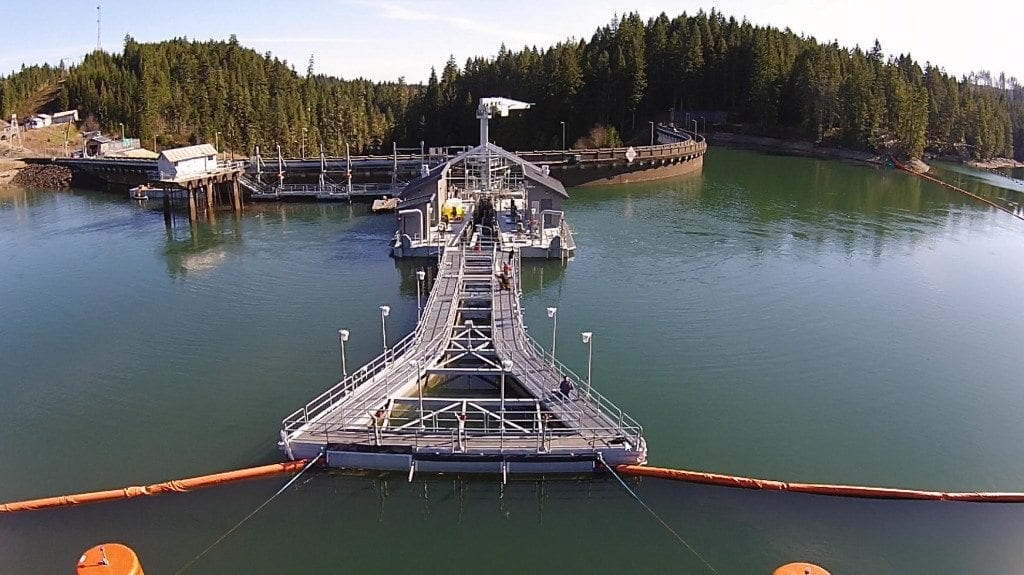 entire reservoir operating range and allow employees to safely get on and off. The collector puts a 150,000-pound load on the dam through the connection during extreme storm events.
entire reservoir operating range and allow employees to safely get on and off. The collector puts a 150,000-pound load on the dam through the connection during extreme storm events.
Engineers built a space-age structural connection that includes a cutting-edge, shock-absorbing connector to anchor the aft end of the collector. This connection allows for the FSC to roll, pitch, move up and down freely, and compress if needed.
Results
It is a dynamic example of how community collaboration can inspire a leap forward in technology and design, ultimately helping restore fish populations on the North Fork Skokomish River. Additionally, it will provide much-needed data about Lake Cushman fish – total populations, timing of how they move, how they approach the collector.
Stakeholder Quotes
“The Skokomish Indian Tribe congratulates the City of Tacoma on the completion of the Floating Surface Collector; it is a major accomplishment and a cornerstone project toward achieving Skokomish Watershed natural resource recovery and management goals. The City has demonstrated a commitment as a watershed partner throughout the design, construction and deployment of this installation. We look forward to continue working with the City on this project, and others that are currently being implemented and projects that are still in the planning stages.” – Joseph Pavel, Skokomish Indian Tribe, Natural Resources Director
“I will be excited to see this new era of the Cushman Project going forward, with anadromous fish once again inhabiting Lake Cushman and the upper North Fork Skokomish River. It’s really gratifying, after a very long relicensing process and eventual collaboration among many stakeholders, to see the results in a Floating Surface Collector specifically adapted to the Cushman Project. The land and waterscape of Lake Cushman makes locating and the sighting of the guide and barrier net at Cushman more complicated than others. We addressed that by exploring a lot of different options with the design/engineering team at Tacoma Power. There was a lot of challenge in trying to include all of the necessary functions in a more compactly scaled FSC design. The Cushman FSC has a smaller attraction flow, but the overall dimensions are smaller too, making it challenging to fit components that don’t scale down so readily. A tram delivers a hopper containing collected smolts down the side of Cushman Dam No. 2. It is clever and definitely has a WOW factor. The same tram also transfers adult fish collected at the adult collection facility to handling facilities near the top of the dam. Although it has only just begun operations, I fully expect the Cushman FSC to become yet another example that efficient downstream fish passage is indeed possible and productive at high-head storage hydro projects.” – Steve Fransen, Fishery Biologist, National Marine Fisheries Service


